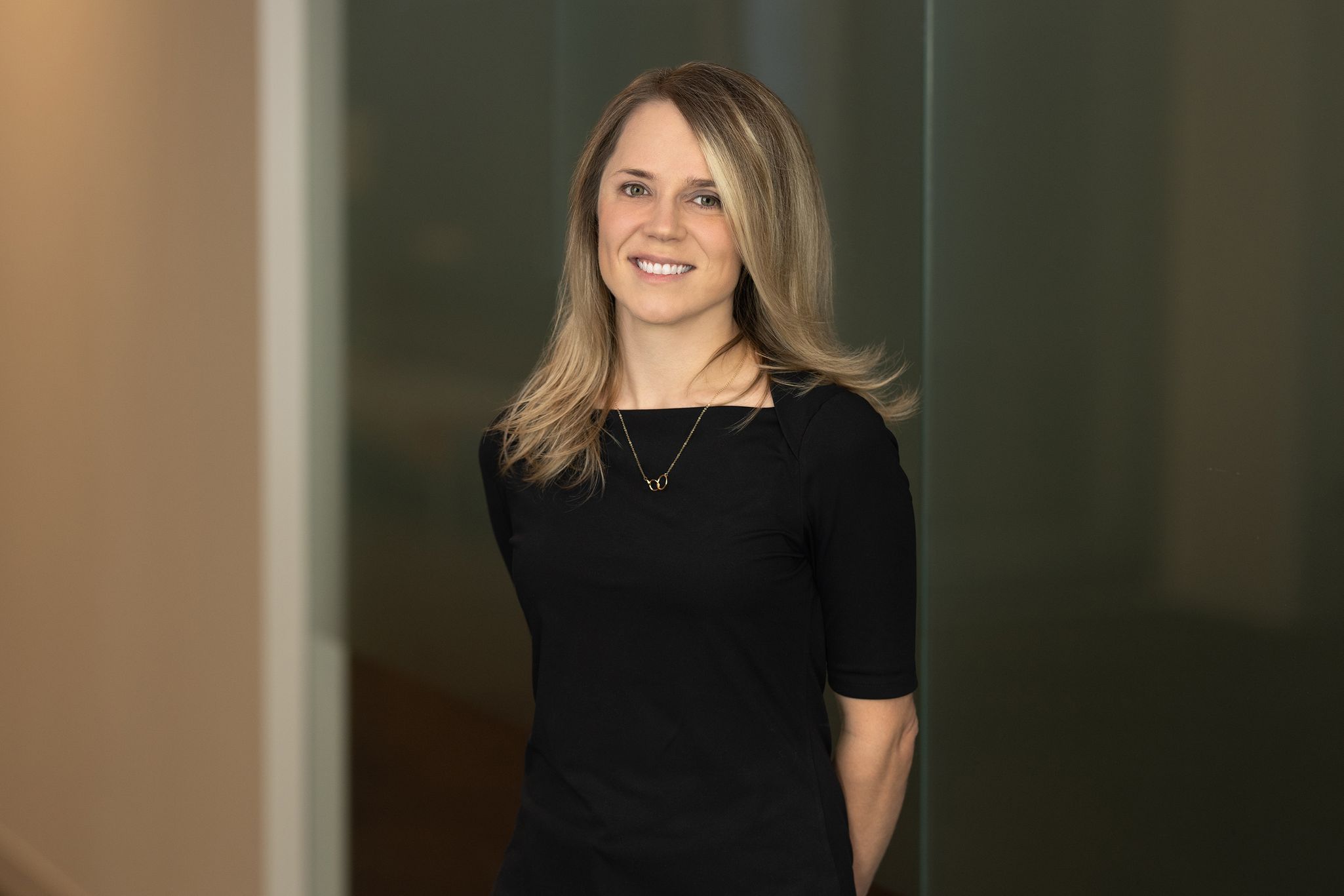
Dr. Kacey Rajkovich is a patent agent in the Washington, D.C., office of Wilson Sonsini Goodrich & Rosati, where she is a member of the patents and innovations practice.
Prior to joining the firm, Kacey was an academic neuroscientist whose research primarily focused on identifying the physiological and molecular underpinnings of neural circuit dysfunction and aberrant sensory processing that accompany rare genetic autism spectrum disorders. Under the guidance of Dr. Kimberly Huber and Dr. Jay Gibson at the University of Texas – Southwestern Medical Center, Kacey gained expertise in intracellular electrophysiology, optogenetics, and laser-guided brain circuit mapping to carry out her dissertation research, which resulted in the discovery that a single transcription factor differentially regulates synaptic connectivity at specific cortical input pathways and is required for normal development of neural circuits driving somatosensation. Her discovery has raised new questions regarding how a seemingly general activity-dependent transcription factor in the nucleus can cause highly specific regulation of glutamatergic synaptic transmission and neural circuit function.
After obtaining her doctorate degree, Kacey was a postdoctoral researcher at Yale University in the laboratory of Dr. Michael Higley where she performed in vivo two-photon calcium imaging in awake behaving animals to study the role of GABAergic synaptic transmission in the visual cortex during real-time visual processing. She then accepted a postdoctoral research position in the Neuroscience Department at Johns Hopkins University in the laboratory of Dr. Richard Huganir where she studied the physiological and molecular mechanisms of cortical synapse identity, synaptic plasticity, and neural circuit development associated with SynGAP-Related Intellectual Disability. In the Huganir Lab, Kacey utilized electrophysiology, optogenetics, small-particle flow cytometry, and molecular biology to identify the protein composition and function of distinct subpopulations of cortical synapses. She also significantly contributed to ongoing, cutting-edge patient-precision research efforts.
Dr. Kacey Rajkovich is a patent agent in the Washington, D.C., office of Wilson Sonsini Goodrich & Rosati, where she is a member of the patents and innovations practice.
Prior to joining the firm, Kacey was an academic neuroscientist whose research primarily focused on identifying the physiological and molecular underpinnings of neural circuit dysfunction and aberrant sensory processing that accompany rare genetic autism spectrum disorders. Under the guidance of Dr. Kimberly Huber and Dr. Jay Gibson at the University of Texas – Southwestern Medical Center, Kacey gained expertise in intracellular electrophysiology, optogenetics, and laser-guided brain circuit mapping to carry out her dissertation research, which resulted in the discovery that a single transcription factor differentially regulates synaptic connectivity at specific cortical input pathways and is required for normal development of neural circuits driving somatosensation. Her discovery has raised new questions regarding how a seemingly general activity-dependent transcription factor in the nucleus can cause highly specific regulation of glutamatergic synaptic transmission and neural circuit function.
After obtaining her doctorate degree, Kacey was a postdoctoral researcher at Yale University in the laboratory of Dr. Michael Higley where she performed in vivo two-photon calcium imaging in awake behaving animals to study the role of GABAergic synaptic transmission in the visual cortex during real-time visual processing. She then accepted a postdoctoral research position in the Neuroscience Department at Johns Hopkins University in the laboratory of Dr. Richard Huganir where she studied the physiological and molecular mechanisms of cortical synapse identity, synaptic plasticity, and neural circuit development associated with SynGAP-Related Intellectual Disability. In the Huganir Lab, Kacey utilized electrophysiology, optogenetics, small-particle flow cytometry, and molecular biology to identify the protein composition and function of distinct subpopulations of cortical synapses. She also significantly contributed to ongoing, cutting-edge patient-precision research efforts.
- Ph.D., Neuroscience, University of Texas, Southwestern Medical Center
- B.S., Neuroscience, University of Minnesota, Twin Cities
- B.S., Biochemistry, Biophysics, & Molecular Biology, University of Minnesota, Twin Cities
- Postdoctoral National Research Service Award, National Institute of Mental Health
- James Hudson Brown - Alexander B. Coxe Postdoctoral Fellowship, Yale University
- Predoctoral National Research Service Award, National Institute of Mental Health
- 2015 Pfizer’s Best Talk Award, Gordon Research Seminar
- 2015 Most Insightful Question Award, Gordon Research Conference
- U.S. Patent and Trademark Office
- Ph.D., Neuroscience, University of Texas, Southwestern Medical Center
- B.S., Neuroscience, University of Minnesota, Twin Cities
- B.S., Biochemistry, Biophysics, & Molecular Biology, University of Minnesota, Twin Cities
- Postdoctoral National Research Service Award, National Institute of Mental Health
- James Hudson Brown - Alexander B. Coxe Postdoctoral Fellowship, Yale University
- Predoctoral National Research Service Award, National Institute of Mental Health
- 2015 Pfizer’s Best Talk Award, Gordon Research Seminar
- 2015 Most Insightful Question Award, Gordon Research Conference
- U.S. Patent and Trademark Office
Select Publications
- Co-author, “Experience-Dependent and Differential Regulation of Local and Long-Range Excitatory Neocortical Circuits by Postsynaptic Mef2c,” 93(1) Neuron 48-56, 2017
- Co-author, “MEF2C regulates cortical inhibitory and excitatory synapses and behaviors relevant to neurodevelopmental disorders,” Elife., 2016
- Co-author, “FoxP1 orchestration of ASD-relevant signaling pathways in the striatum,”29(20) Genes & Development 2081-96, 2015
Select Publications
- Co-author, “Experience-Dependent and Differential Regulation of Local and Long-Range Excitatory Neocortical Circuits by Postsynaptic Mef2c,” 93(1) Neuron 48-56, 2017
- Co-author, “MEF2C regulates cortical inhibitory and excitatory synapses and behaviors relevant to neurodevelopmental disorders,” Elife., 2016
- Co-author, “FoxP1 orchestration of ASD-relevant signaling pathways in the striatum,”29(20) Genes & Development 2081-96, 2015
- Privacy Policy
- Terms of Use
- Accessibility